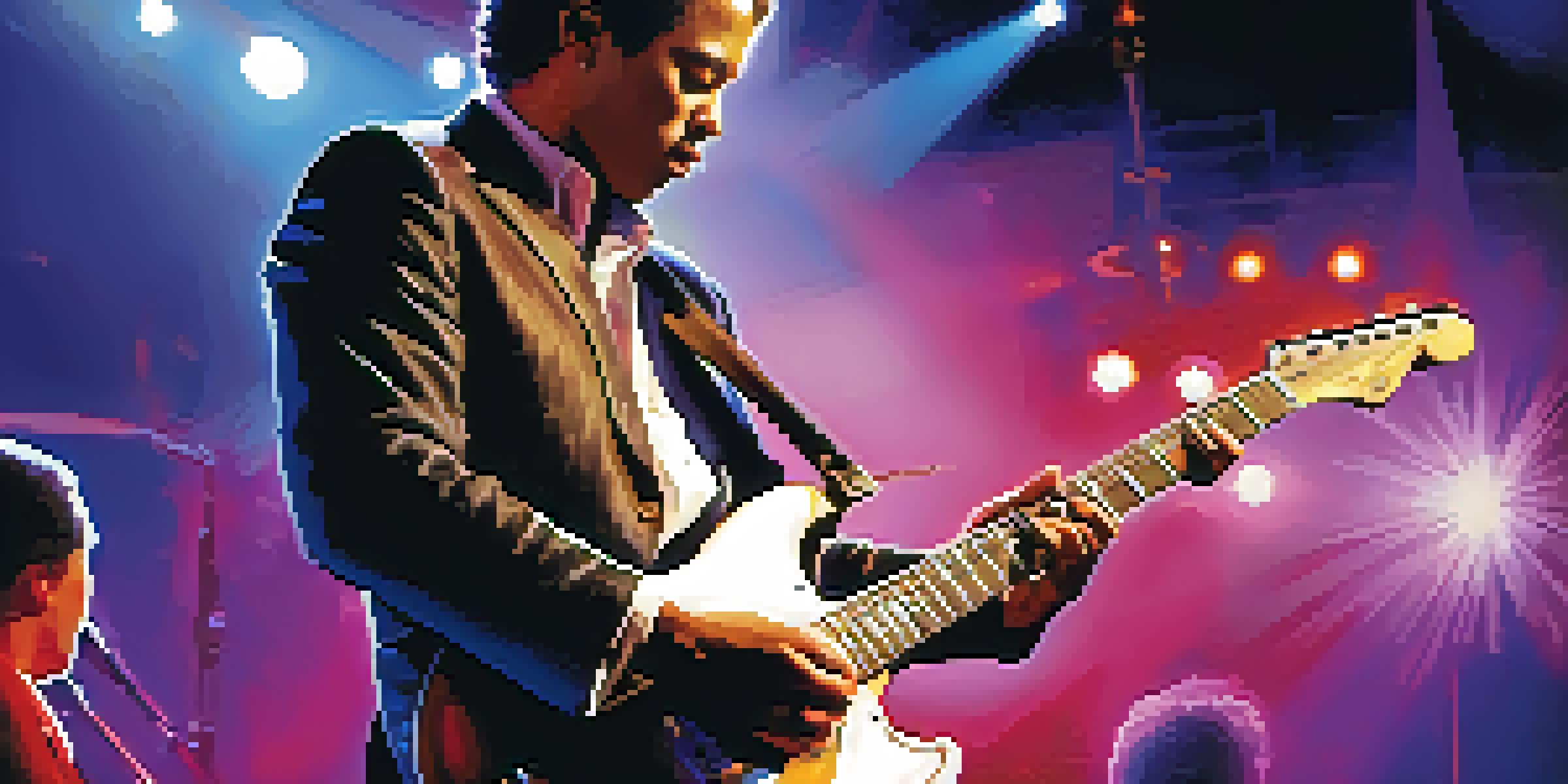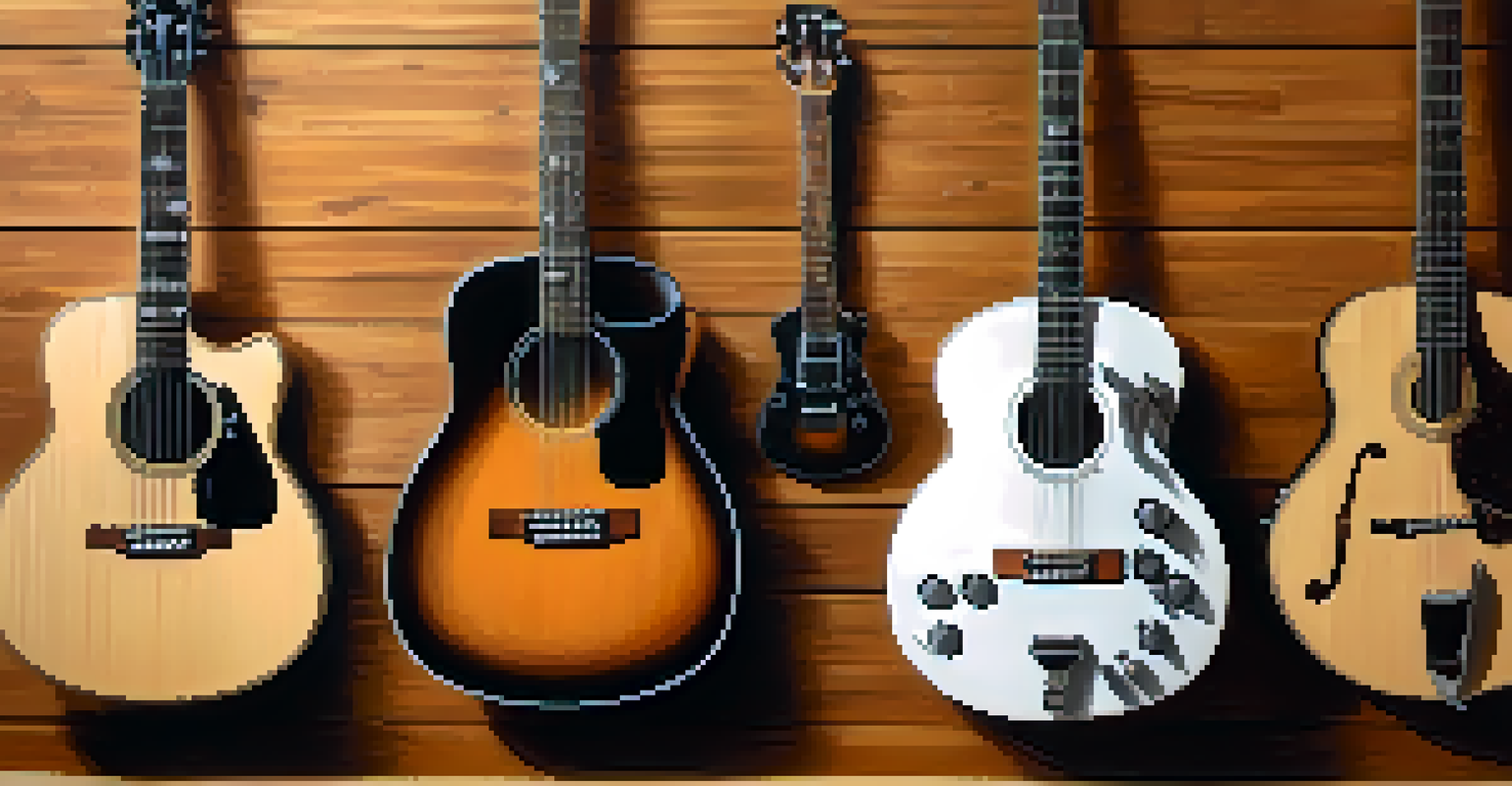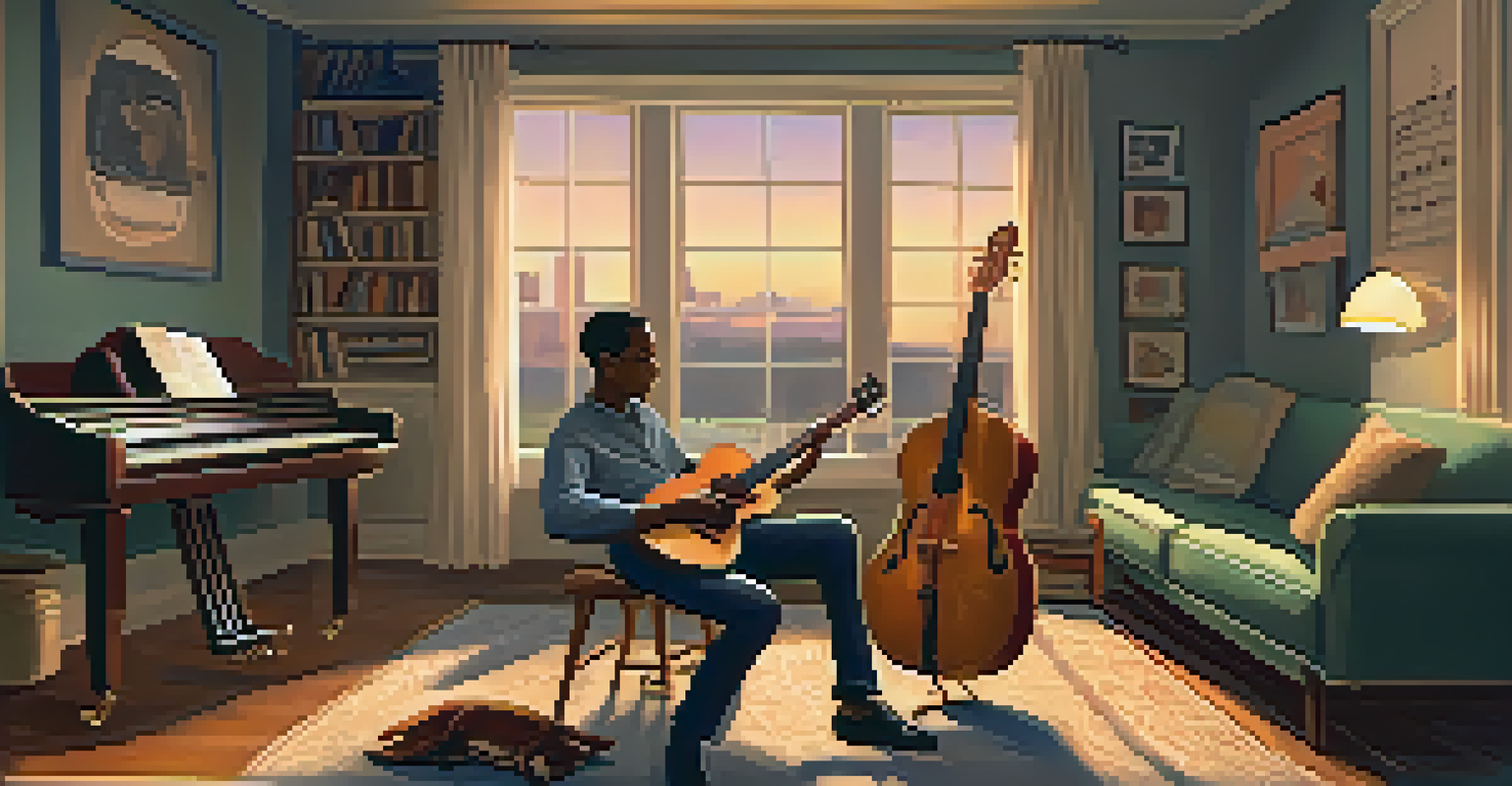Understanding the Role of Guitar in Jazz Improvisation

The Importance of Guitar in Jazz Music History
The guitar has played a pivotal role in the evolution of jazz music since its inception. Initially relegated to a background role, it gradually emerged as a prominent instrument, adding depth and texture to jazz ensembles. Artists like Charlie Christian paved the way by showcasing the guitar's potential for both rhythm and melody, influencing countless musicians.
Jazz is not just music, it's a way of life.
As jazz progressed through various styles, from swing to bebop, the guitar adapted and found its unique voice. It became a key instrument for improvisation, allowing players to express themselves in new and exciting ways. This evolution not only transformed how the guitar was perceived but also expanded the overall sound of jazz.
Today, guitarists like Pat Metheny and John Scofield continue to push boundaries, blending jazz with other genres. Their innovative approaches demonstrate the guitar's versatility and its integral role in the ongoing narrative of jazz music.
Understanding Jazz Improvisation Basics
Jazz improvisation is the art of spontaneously creating music within a framework of chords and melodies. Unlike other genres that may rely heavily on written music, jazz encourages musicians to express their creativity on the spot. This freedom is what makes jazz so vibrant and unpredictable, with each performance being a unique experience.

At its core, improvisation involves understanding scales, chord progressions, and the overall structure of a piece. Guitarists often use the pentatonic scale or the blues scale to craft solos that resonate emotionally with the audience. By mastering these elements, musicians can confidently navigate through various jazz styles and express their individuality.
Guitar's Evolution in Jazz
The guitar transitioned from a background instrument to a key player in jazz, showcasing its potential for both rhythm and melody.
Think of improvisation as a conversation between musicians, where each player responds to the other's ideas. This dynamic exchange is what brings jazz to life, making it a collaborative art form. The guitar, with its ability to mimic vocal lines and harmonies, becomes a key participant in this musical dialogue.
Key Techniques for Guitar Improvisation
To truly excel in jazz improvisation, guitarists must master a variety of techniques. These include bending notes, slides, and hammer-ons, which add expressiveness to solos. Each technique allows musicians to emulate the fluidity of the human voice, creating a more engaging performance.
The beautiful thing about learning is that no one can take it away from you.
Another crucial aspect is the use of arpeggios, which are notes of a chord played in succession. By incorporating arpeggios into their solos, guitarists can outline harmonic structures while adding melodic interest. This not only showcases their technical skills but also enhances the overall improvisational quality of the performance.
Moreover, practicing call-and-response patterns helps guitarists develop a strong sense of timing and interaction. By listening to recordings of great jazz guitarists and mimicking their phrases, musicians can internalize the nuances of jazz improvisation and find their unique voice within the genre.
The Role of Harmony in Guitar Improvisation
Harmony serves as the backbone of jazz music, providing the framework within which guitarists improvise. Understanding chord changes and their relationships is essential for crafting solos that resonate with the overall sound. Guitarists must be able to identify and navigate through various harmonic structures to create compelling improvisations.
For instance, knowledge of chord extensions and alterations can significantly enhance a guitarist's improvisational vocabulary. By incorporating seventh, ninth, or even thirteenth chords, musicians can add richness and complexity to their solos. This harmonic depth allows for more expressive phrasing and creates a captivating listening experience.
Improvisation as Musical Dialogue
Jazz improvisation is like a conversation between musicians, allowing for spontaneous creativity that makes each performance unique.
Additionally, the use of modal interchange can further expand a guitarist's improvisational palette. By borrowing chords from different modes, guitarists can introduce unexpected colors and textures into their solos, keeping the audience engaged and intrigued.
Listening and Analyzing Great Guitarists
One of the best ways to improve as a jazz guitarist is through active listening and analysis of great players. By studying the styles of legends like Wes Montgomery or Django Reinhardt, musicians can gain insights into their techniques and approaches to improvisation. This practice not only inspires creativity but also helps guitarists develop their own unique sound.
Listening to recordings allows musicians to dissect solos, uncovering the choices made by these masters. It’s akin to reverse engineering a recipe, where one learns the ingredients and techniques used to create a delicious dish. This analysis can reveal patterns, phrasing, and harmonic ideas that can be incorporated into the guitarist's own playing.
Moreover, attending live performances can provide invaluable lessons in improvisation. Observing how seasoned guitarists interact with other musicians in real-time can enhance one's understanding of musical communication and spontaneity, essential components of jazz.
The Influence of Other Genres on Jazz Guitar
Jazz is a melting pot of musical influences, and the guitar has seamlessly integrated elements from various genres. From blues to rock, folk to classical, these styles have enriched jazz guitar improvisation. This cross-pollination allows guitarists to borrow techniques and ideas, broadening their musical horizons.
For example, the blues scale is a staple in jazz guitar improvisation, rooted in African American musical traditions. Its emotive quality and expressive bends enable guitarists to convey deep feelings, enhancing their improvisational voice. Similarly, the influence of rock guitarists has introduced new tones and techniques, pushing the boundaries of jazz.
Influence of Diverse Genres
Jazz guitar has absorbed elements from various genres, enriching its sound and encouraging guitarists to explore new techniques and ideas.
As jazz continues to evolve, guitarists are encouraged to explore and incorporate elements from different genres. This not only cultivates versatility but also keeps the jazz tradition alive and relevant in an ever-changing musical landscape.
Practicing for Effective Jazz Improvisation
Effective practice is key to mastering jazz improvisation on the guitar. Musicians should focus on specific skills, such as scales, arpeggios, and rhythmic patterns, dedicating time to each. Setting realistic goals and tracking progress can help maintain motivation and ensure steady improvement.
One helpful technique is the use of backing tracks, which simulate real band scenarios. Practicing improvisation over these tracks allows guitarists to experiment with different ideas and sounds in a supportive environment. This method encourages creativity while building confidence in one's improvisational abilities.

Finally, recording practice sessions can provide valuable feedback. Listening to one's own playing helps identify areas for improvement and track growth over time. This reflective process enhances learning and contributes to developing a distinct jazz guitar voice.